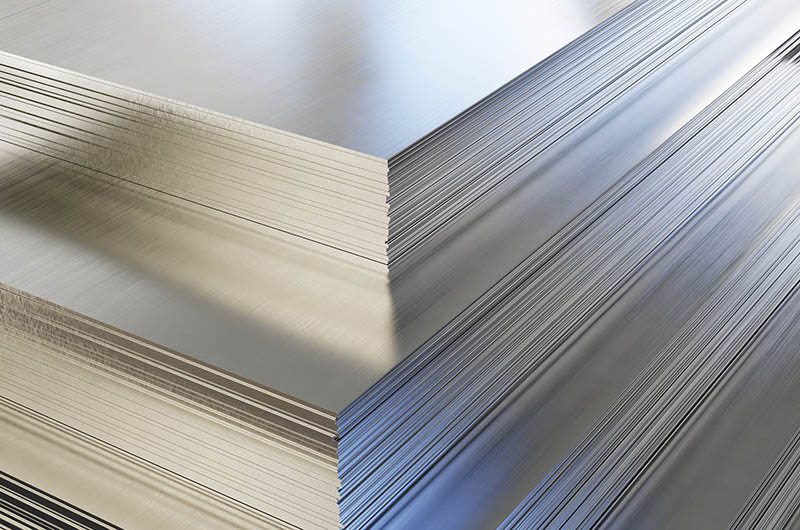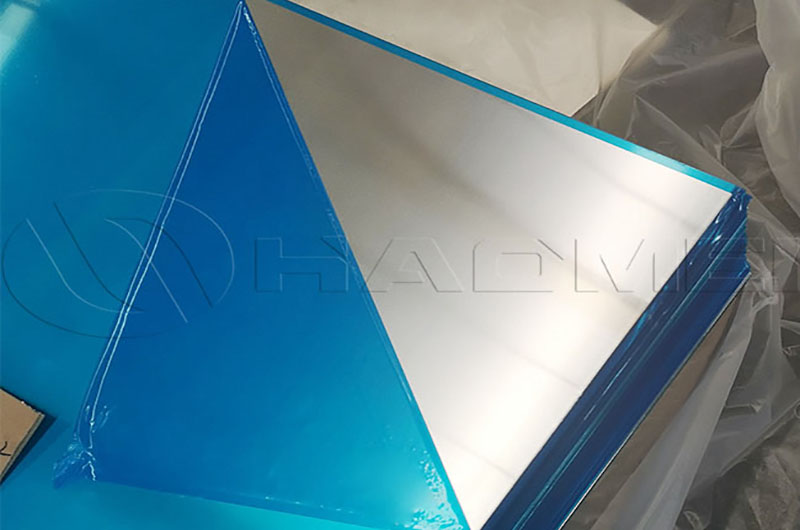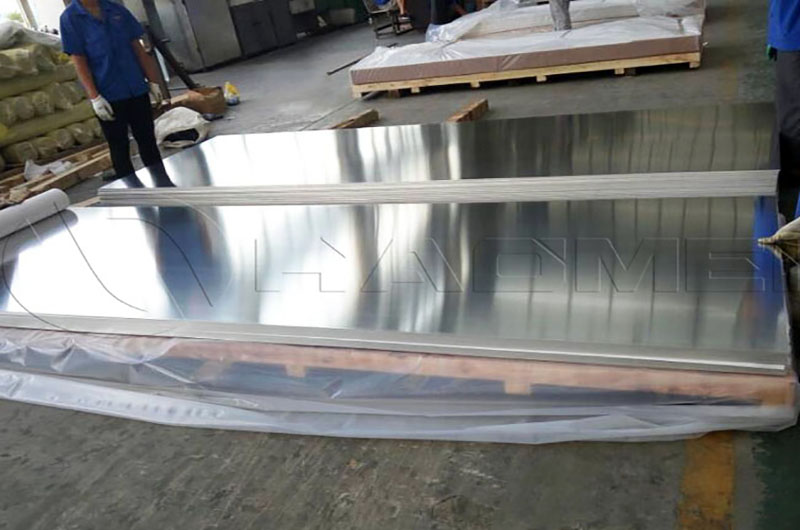- 5005 Aluminum Plate Sheet Specifications
- 5005 Aluminum Plate Features
- Typical Mechanical Properties of 5005 Aluminum Plate
- 5005 Aluminum Plate Advantages Disadvantages
- 5005 Aluminum Plate Forming
- 5005 Aluminum Plate Welding
- 5005 Aluminum Plate Machining
- Typical 5005 Aluminum Plate
- 5005 Aluminum Plate Sheet Applications
- Chemical Composition of 5005 Aluminum Plate
- 5005 vs 5052 Aluminum Plate
5005 aluminum plate is available in a variety of forms including sheet, coil and plate. It is usually supplied in the annealed or H32 temper, but can also be supplied in the H34 or H36 temper depending on application requirements.

5005 Aluminum Plate is an aluminum alloy that is commonly used in various applications due to its excellent corrosion resistance, weldability, and formability. It belongs to the 5xxx series of aluminum alloys and is characterized by a high magnesium content.
5005 aluminum sheet is commonly used in architectural and decorative applications, as well as in the automotive, marine and aerospace industries. It is also used in food and chemical processing equipment, appliances and storage tanks. This alloy is ideal for applications requiring high corrosion resistance and good weldability.
5005 Aluminum Plate Sheet Specifications
- Temper : O, H32, H34, H36
- Thickness : 0.2mm - 500mm
- Width : 200mm - 3000mm
- Length : up to 12000mm
- Surface treatment : polished, brushed, anodized, etc.
- Standards : ASTM B209, EN 485-2, EN 573-3, GB/T 3880.1-2012, etc.
- Equivalents of 5005 : UNS A95005, Aluminum 5005, AA5005, Al5005, A5005, 5005a, 5005aa, al5005, a 5005, aa 5005, jis a5005p, al5005 class, aw5005, en5005
5005 Aluminum Plate Features
- 1. Good corrosion resistance
- 2. Easy to anodize
- 3. Medium strength aluminum alloy
- 4. Good formability,
- 5. Suitable for applications requiring bending, spinning, stretching, stamping and roll forming.
- 6. Commonly used in applications requiring anodizing.
Typical Mechanical Properties of 5005 Aluminum Plate
| Alloy-Temper |
Tensile Strength (ksi) |
Yield Strength (ksi) |
Elongation (%) |
| 5005-O | 18 | 6 | 22 |
| 5005-H14 | 23 | 22 | 4 |
| 5005-H18 | 29 | 28 | 2 |
| Alloy | Form | Temper | Tensile Strength | Yield Strength | Elongation |
| 5005 | Sheet | H12 | 20 | 19 | 10 |
| 5005 | Sheet | H14 | 23 | 22 | 6 |
| 5005 | Sheet | H16 | 26 | 25 | 5 |
| 5005 | Sheet | H18 | 29 | 28 | 4 |
| 5005 | Sheet | H32 | 20 | 17 | 11 |
| 5005 | Sheet | H34 | 23 | 20 | 8 |
| 5005 | Sheet | H36 | 26 | 24 | 6 |
| 5005 | Sheet | H38 | 29 | 27 | 5 |
5005 Aluminum Plate Advantages Disadvantages
This aluminum is the weakest of the non-heat-treatable aluminum alloys. However, it can be hardened by cold working, is well suited for decorative anodizing, and has good weldability.
5005 Aluminum Plate Forming
5005 has excellent formability, especially in softer tempers. SAF carriers 5005 H34 temper which is slightly harder and is comparable to 5052 H32 for forming.
5005 Aluminum Plate Welding
5005 alloy is noted for excellent welding characteristics. When 5005 material will be welded and then anodized, SAF recommends a 5356 welding wire for best color uniformity. Weld discoloration can still occur, but it is less severe than other welding alloys.
5005 Aluminum Plate Machining
5005 machinability is generally fairly poor. Soft 5005 tempers machine worse than harder tempers. 5005 H34 and 5005 H38 can be machined, but with much more difficulty than many other aluminum alloys.
Typical 5005 Aluminum Plate
5005 O Aluminum Plate
O This is the softest state of 5005 aluminum and the easiest to form.
- Features : softest state, low strength, high ductility, good formability.
- Difference : easy to form, lower strength than other states.
- Fields of application : construction, electrical, general manufacturing.
- Specific applications : general manufacturing, cookware, chemical equipment, sheet metal processing, home appliances.

5005 H32 Aluminum Plate
H32 is the strain hardened and stable state of 5005 aluminum.
- Features : Strain hardening stabilization, moderate strength, good formability.
- Differences : Higher strength and formability compared to O temper, but lower corrosion resistance compared to H34 and H36 tempers.
- Fields of application : construction, electrical, general manufacturing.
- Specific applications : general manufacturing, sheet metal processing, automotive, lighting, kitchen cabinets.
5005 H34 Aluminum Plate
H34 is another strain hardening stable state of 5005 aluminum with higher strength than H32. It is commonly used in marine applications and has excellent salt water corrosion resistance.
- Features : Stabilized strain hardening, high strength, good formability, excellent corrosion resistance.
- Differences : Higher strength and corrosion resistance than H32 temper, but slightly lower formability.
- Fields of application : marine, building, construction.
- Specific applications : ships, shipbuilding, chemical equipment, storage tanks, sign making, roofs.

5005 H36 Aluminum Plate
H36 is a higher strength version of the H34 temper with better corrosion resistance. It is also commonly used in marine applications, and other environments where high corrosion resistance is required.
- Properties : Strain hardening and steady state, highest strength and corrosion resistance, good formability.
- Differences : Highest strength and corrosion resistance of all tempers, but slightly lower formability compared to H34 temper.
- Fields of application : marine, building, construction.
- Specific applications : ships, shipbuilding, chemical equipment, storage tanks, roofs.
5005 Anodized Aluminum Plate
5005 aluminum plate is anodized to improve its durability, appearance and corrosion resistance.
- Features : Good formability and weldability, improved surface hardness and scratch resistance
- Pros : Multiple color and finish options improve aesthetic appearance, non-toxic and environmentally friendly
- Fields of application : construction, transportation, electrical and electronic equipment, packaging and containers
- Specific applications : building facades, interior design and signage, automotive and aerospace applications, food and beverage packaging such as cans
5005 Aluminum Plate Sheet Applications
5005 Aluminum Plate for Decorative
5005 Due to its excellent corrosion resistance, 5005 aluminum sheet is widely used in building and construction applications such as roofing, wall panels, and window frames.
- Status : O
- Advantages : Including light weight, high strength and good corrosion resistance. It is also easy to form and has good weldability, making it a versatile material for a variety of construction applications.

5005 Automotive Aluminum Plate Sheet
5005 aluminum plate is used in the automotive industry for body panels, engine components and other components requiring high strength and corrosion resistance.
- Status : H32, H34
- Advantages : including high strength, good formability, corrosion resistance, etc. It's also lightweight, which helps improve fuel efficiency and reduce emissions.
Click to learn more aboutAutomotive Aluminum Plate
5005 Marine Aluminum Plate Sheet
5005 This type of aluminum sheet is also used in the marine industry for shipbuilding and other applications where salt water corrosion resistance is required.
- Status : H34, H36
- Advantages : Including its excellent resistance to salt water corrosion, high strength and light weight. It is also easy to form and weld, which makes it ideal for shipbuilding and other marine applications.
Click to learn more aboutMarine Grage Aluminum Plate
5005 Aluminum Plate for Manufacture
5005 aluminum plate is widely used in general manufacturing applications such as food packaging, heat exchangers, and chemical processing equipment.
- Temper : O, H32
- Advantages : Including its good formability, weldability and corrosion resistance. 5005 is also a lightweight material that is easy to handle and transport.
5005 Aluminum Plate for Electric
5005 Due to its good electrical conductivity and corrosion resistance, this aluminum sheet is used in electrical applications, including transformers and switchgear components.
- Status : O
- Advantages : Including its good electrical conductivity, corrosion resistance and ease of fabrication.
Chemical Composition of 5005 Aluminum Plate
| element | Si | Fe | Cu | Mn | Mg | Cr | Zn | Ti | Others-Each | Others Total | Al Min |
| 5005 | 0.30 | 0.7 | 0.20 | 0.20 | 0.5-1.1 | 0.10 | 0.25 | – | 0.05 | 0.15 | Remainder |
5005 vs 5052 Aluminum Plate
Both 5005 and 5052 aluminum are popular types of aluminum alloys that offer good strength, formability, and corrosion resistance. However, there are some key differences between them that make each alloy better for certain applications.
- Magnesium Content : 5005 Aluminum has a lower magnesium content than 5052 Aluminum (0.5% vs. 2.5%), which results in 5005 being slightly less strong and stiff.
- Corrosion resistance : 5052 is more resistant to corrosion, 5052 aluminum is slightly better resistant to salt water and other corrosive environments due to its higher magnesium content.
- Formability : 5005 aluminum is more formable, which makes it easier to bend and form into complex parts.
- Weldability : 5005 aluminum is easier to weld than 5052 aluminum.
-
Application :
- 5005 aluminum is commonly used in architectural and decorative applications, as well as in the automotive and appliance industries.
- 5052 aluminum is commonly used in marine and transportation applications, as well as sheet metal fabrication.
Both 5005 and 5052 aluminum sheets are versatile alloys that offer good strength, formability, and corrosion resistance. The choice between the two will depend on specific application requirements, such as the desired level of corrosion resistance and desired formability and weldability.
